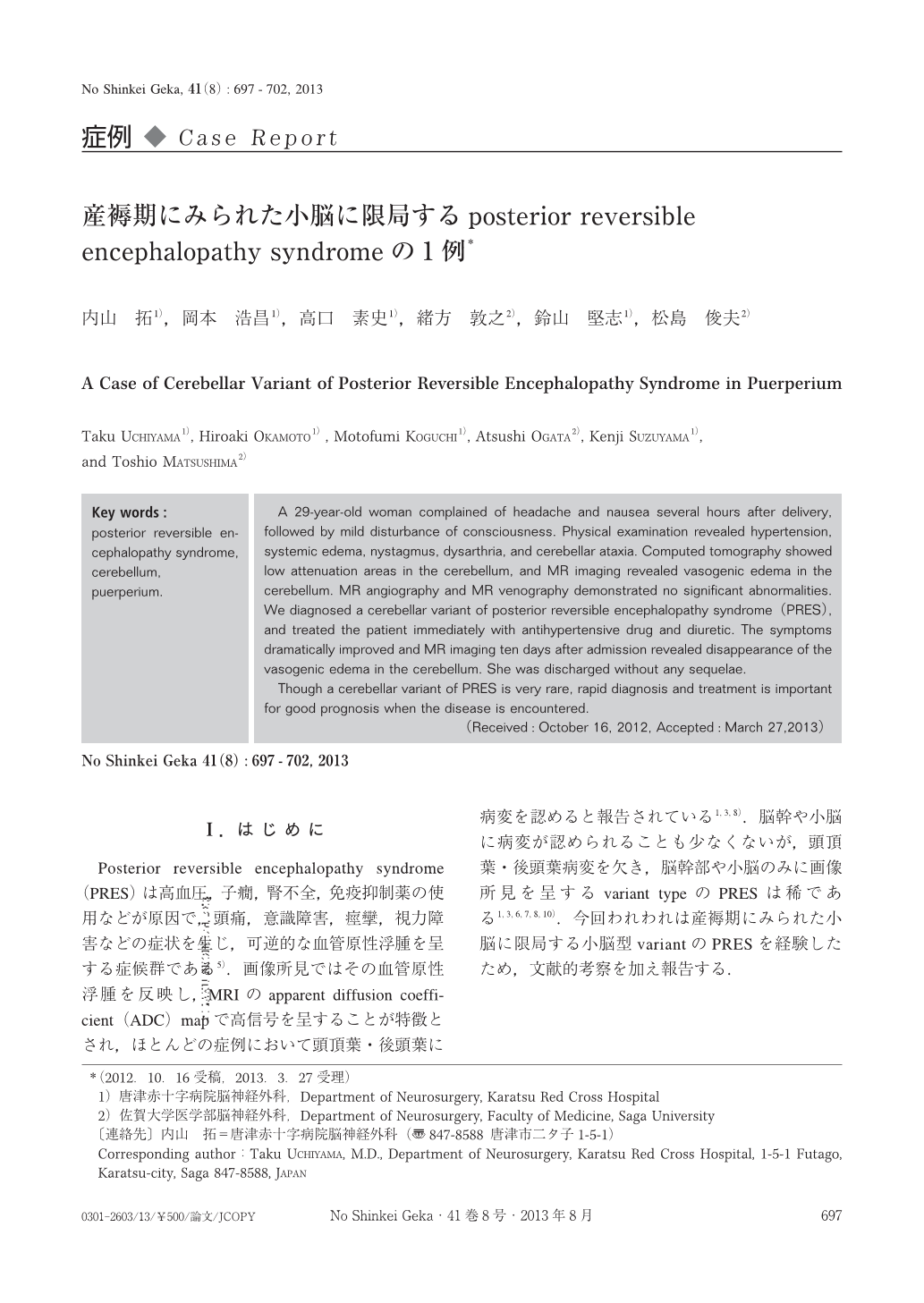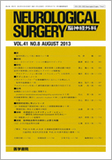Japanese
English
- 有料閲覧
- Abstract 文献概要
- 1ページ目 Look Inside
- 参考文献 Reference
Ⅰ.はじめに
Posterior reversible encephalopathy syndrome(PRES)は高血圧,子癇,腎不全,免疫抑制薬の使用などが原因で,頭痛,意識障害,痙攣,視力障害などの症状を生じ,可逆的な血管原性浮腫を呈する症候群である5).画像所見ではその血管原性浮腫を反映し,MRIのapparent diffusion coefficient(ADC)mapで高信号を呈することが特徴とされ,ほとんどの症例において頭頂葉・後頭葉に病変を認めると報告されている1,3,8).脳幹や小脳に病変が認められることも少なくないが,頭頂葉・後頭葉病変を欠き,脳幹部や小脳のみに画像所見を呈するvariant typeのPRESは稀である1,3,6,7,8,10).今回われわれは産褥期にみられた小脳に限局する小脳型variantのPRESを経験したため,文献的考察を加え報告する.
A 29-year-old woman complained of headache and nausea several hours after delivery, followed by mild disturbance of consciousness. Physical examination revealed hypertension, systemic edema, nystagmus, dysarthria, and cerebellar ataxia. Computed tomography showed low attenuation areas in the cerebellum, and MR imaging revealed vasogenic edema in the cerebellum. MR angiography and MR venography demonstrated no significant abnormalities. We diagnosed a cerebellar variant of posterior reversible encephalopathy syndrome(PRES), and treated the patient immediately with antihypertensive drug and diuretic. The symptoms dramatically improved and MR imaging ten days after admission revealed disappearance of the vasogenic edema in the cerebellum. She was discharged without any sequelae.
Though a cerebellar variant of PRES is very rare, rapid diagnosis and treatment is important for good prognosis when the disease is encountered.

Copyright © 2013, Igaku-Shoin Ltd. All rights reserved.


